Article
Stockholm Syndrome
Author(s):
Sweden's capital is a tourist's delight with plenty of cultural and historical sights.
Photography by the authors
Most Americans are not well versed on European history, especially that of Scandinavia. Perhaps Sweden gets more press. The U.S. probably knows it best.
We recall that someone, somehow dragged a 300-year-old sailing ship out of the depths of Stockholm’s harbor about 50 years ago and there has been something in the media recently that preserving the wood has again become a problem. And we remember that —
although Sweden was always Top Dog in the many centuries of war in those latitudes —
for almost 200 years Sweden has been able to maintain its neutrality and avoid the destitution that war costs nations. We know Swedish diplomat, Raoul Wallenberg, saved tens of thousands of Jews from the Nazis and that the generosity of industrialist, Alfred Nobel, has given prizes for more than a hundred years.
have
We know this and all about those jewels of design Saab and Volvo cars. And IKEA and ABBA, Absolut Vodka and Swedish meatballs, and Swedish massage and the midnight sun. But what about the people? From the crime novels sweeping across America penned by Stieg Larsson and Henning Mankell, one might expect Swedes to be humorless even morose but they are not, though they been described as the most intolerant tolerant people in Europe.
Swedes stride elegantly along their boulevards, content, elegant —
and tall. Walking behind them is like following an American basketball team through an airport. The only criticism one might make of those Swedes strolling the streets of Stockholm is they seem just a little bit smug that their culture, society and life is the best in the world —
and they may well be right.
Stockholm is a delightful destination for visitors. Its tourism board is comfortable in English and competent and helpful, and it has the best tourist office in Scandinavia. Sweden, a country a little larger than California, has a population of nine million people and its capital’s greater metropolitan area is home to about two million.
The city itself has 800,000 residents but it seems smaller: all its attractions are easily seen on foot or with public transportation. Strömma, a local touring company not only runs easy HopOn HopOff busses but similar boats. After all, Stockholm has been called the Venice of the North and as you walk around you never forget this is “the city that floats on water.”
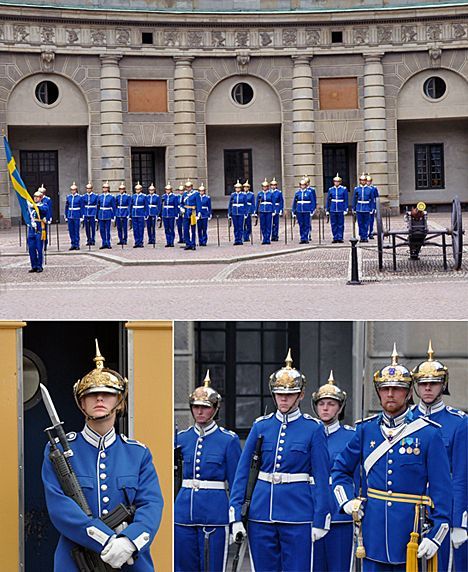
You can see a significant amount of Stockholm in three days. You probably should consider staying in the south part of the city close to the water and the main railway station —
that’s where most of the attractions lie. It’s also just a few hundred yards to the north to where you get the Arlanda Express train to the airport and, closer still, going south, you find the Gamla Stan (Old Town) and the Royal Palace — sure fun for tourists lucky enough to get there early for the changing of the guard. Remember, if you get there late you’ll be standing behind all those tall Swedes!
As you check out hotels online understand hotels can be reasonably priced at times in Stockholm. The Sheraton Stockholm Hotel on Tegelbacken 6 downtown had rooms for about $200 a night when we stayed there, significantly less than what most upscale European hotels charge. Don’t judge Sheraton by its performance in the United States; international Sheraton is a far superior product.
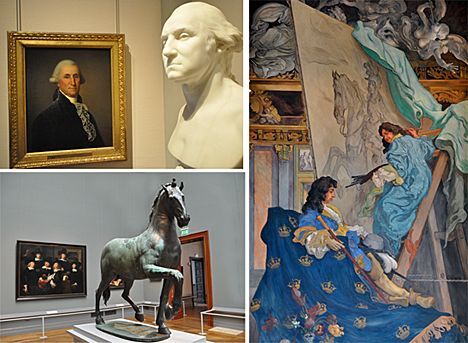
Pacing Horse
The Six Regents and Beadle of the Nieuwe Zijds Institute for Outdoor Relief of the Poor
The famous Grand Hotel stands next to the National Museum, which is a wonderful repository of Swedish artifacts and national art. A bust and painting of George Washington show up surprisingly here. Washington sat for Jean Antoine Houndon’s sculpture in Mount Vernon in 1785 and posed for Adolf Ulrik Wertmüller in 1795; it’s a revelation to find them so far from home. De Vries’ (1607) stands before Bol’s (1657). The horse looks as if it would be more fun.
And who says the Swedes come hard to humor? The work of beloved painter Carl Larsson (the “Swedish Norman Rockwell”) displayed on the walls of the museum would amuse any visitor. The mural at the entrance shows a dignitary being painted as if on a stallion whereas the artist has him posing in a padded chair.
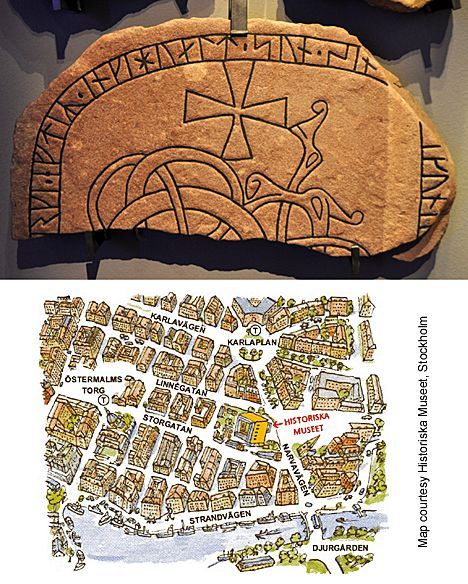
The National Historical Museum at
Narvavägen 13-17
is farther afield to the northeast above the promenade Strandvagen. You might want to ask your hotel concierge to map your route. It has exhibits from the Stone Age to the Vikings and the Middle Ages.
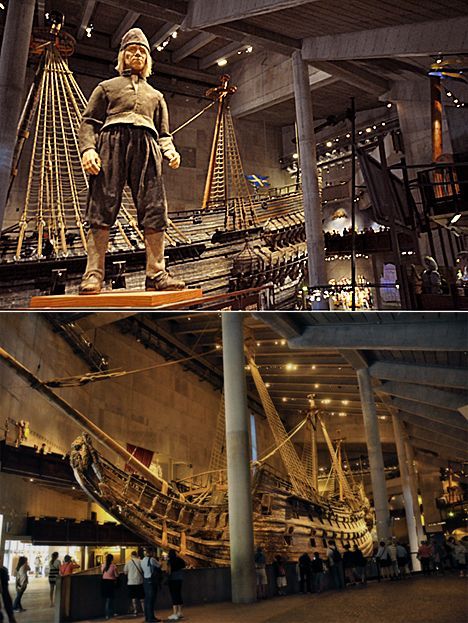
As far as museums go the most popular seems to be Vasa, the ship that sank in 1628 to be dragged from the sea after 333 years. Its final resting place is its own private museum. Give yourself enough time though, because your wait could be as long as squeezing in to see the changing of the palace guard. The easiest way to get to Vasa, the ship, is by boat, and the same Strömma On Off boats then carry you off to the second most popular attraction in Stockholm, Skansen. Here picnic grounds, an amusement park, a children’s zoo, windmills and open air museums with docents and musicians in costume compete with all their outdoor attractions in what was once the royal hunting grounds.
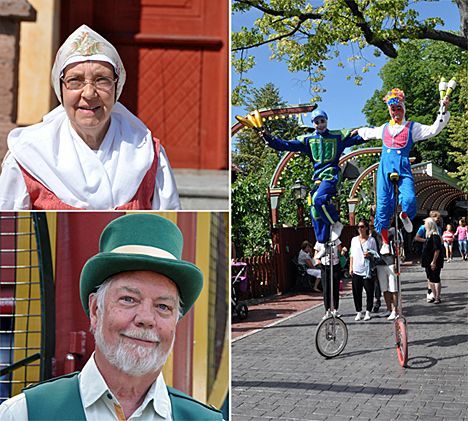
Horse drawn carriages stand in Skansen to take children for rides as they do in front of the Royal Palace, sometimes in odd juxtaposition to Coca Cola vans. Beyond the palace lie the Nobel Museum and the arched alleys and cobbled streets of Gamla Stan, the Old Town.
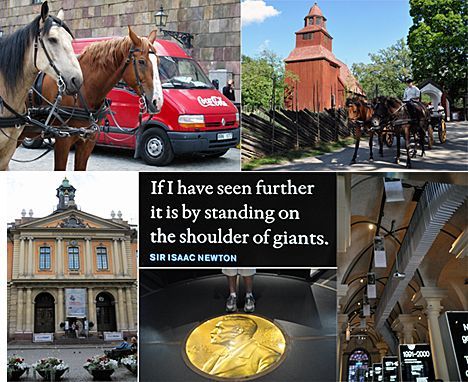
If you take a day to sail on an On Off boat to most of the museums, allow another day to walk this beautiful city. The tourist areas don’t seem to have the heavy traffic of most American cities and Scandinavia has been in the forefront of creating pedestrian malls that delightfully exclude cars.
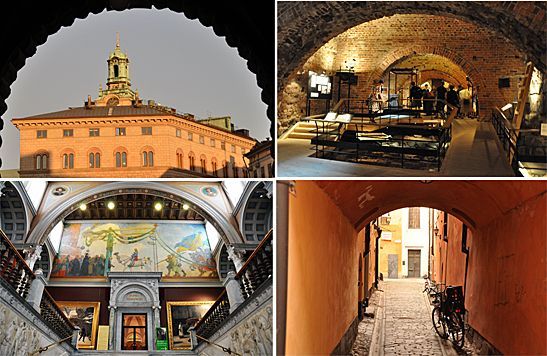
There is time to wander and ask yourself questions: What does that sign point to, why is that statue waving, what happened to the sails of that windmill, who owned those magnificent homes by the water? If you ask passersby, you’ll be answered often in fluent English; Swedes are amiable, proud of their city and pleased to tell you about it.
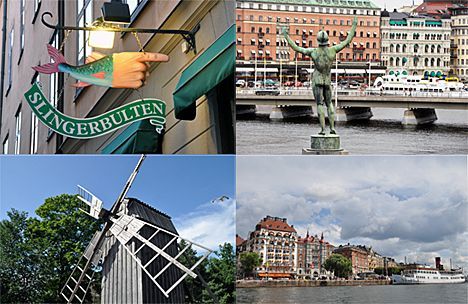
Only if you walk will you find the part of this continent the world should never forget: the tribute in a subdued city square to Raoul Wallenberg who died in prison helping Europe’s Jews avoid a similar fate.

It’s especially sad to think that a country like Sweden that tries so hard — and so successfully — to place a safety net under its people couldn’t protect its diplomat. And that he will never stand on a midsummer’s night in Stockholm and watch the midnight sun finally yield as the city falls asleep.
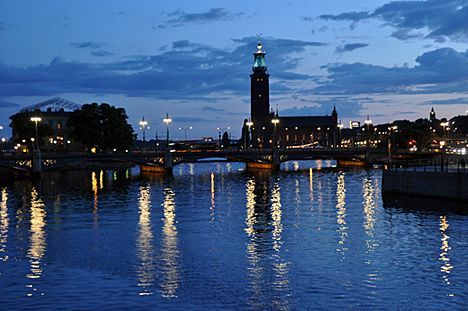
The Man Who Cried Orange: Stories from a Doctor's Life.
The Andersons, who live in San Diego, are the resident travel & cruise columnists for Physician's Money Digest. Nancy is a former nursing educator, Eric a retired MD. The one-time president of the NH Academy of Family Practice, Eric is the only physician in the Society of American Travel Writers. He has also written five books, the last called




